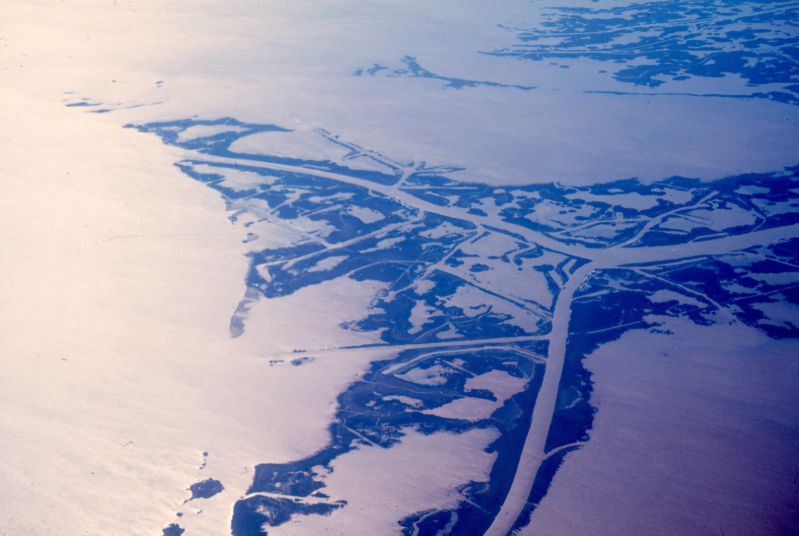A New Study Shows Seafloor Erosion Now Occurring Like Coastal Land Loss
Published on by Water Network Research, Official research team of The Water Network in Academic
Scientists have discovered that the seafloor from the Mississippi River Delta to the Gulf of Mexico is eroding like the land loss that is occurring on the Louisiana coast.

Missisipy river delta, Representative image, Source: NOA, Labeled for reuse
During the 20th century, thousands of dams were built on Mississippi River tributaries stopping the flow of fine silt, clay and other sediment from reaching the delta and seafloor to offset erosion.
Without this sediment, land —in the form of wetlands and the seafloor— is lost, which threatens offshore and inland infrastructure in the face of waves, hurricanes and surge, or flooding, from storms.
Land loss also affects marine plants and animals as well as how pollution is absorbed and broken down. In this new comprehensive study, scientists have mapped the retreat of the seafloor from the Mississippi River Delta into the Gulf of Mexico for the first time. This research was published recently in the journal Marine Geology.
“Imagine this as an underwater extension of land loss that we see at the surface. This is a big deal because it can affect so many processes that occur from the coast to the open ocean including marine organisms’ lifecycles and underwater landslides,” said lead author San Diego State University Assistant Professor Jillian Maloney, who conducted this research as a post-doctoral researcher at LSU.
The scientists used historic nautical charts, data from academic research and the oil and gas industry as well as National Oceanic and Atmospheric Administration underwater mapping data collected from 1764 to 2009.
“From this comprehensive study, we’ve determined that the Mississippi River Delta has entered a stage of decline. The outlets of the Mississippi River also known as the Bird’s Foot Delta have been prograding, or spreading, naturally for hundreds of years, but that has now stopped. The underwater portions of the delta are now retreating like the land loss occurring in our landscape,” said study co-author Sam Bentley, professor and the Billy and Ann Harrison Chair in Sedimentary Geology, LSU Department of Geology and Geophysics.
Recent studies have shown that the construction of levees for flood protection has led to extensive land loss. The levees disconnect the river and an estimated 210 million tons of sediment that would naturally flow down to the delta and build the wetlands and the seafloor.
The Mississippi River Delta is one of the most well-studied and recognizable deltas in the world. Among the world’s rivers, the Mississippi River discharges the seventh largest amount of water and sediment. However, other river deltas around the world are also experiencing similar depletions in sediment and land.
“Given the similarities between the Mississippi River Delta and river systems worldwide, we expect other major delta systems are entering decline. This has implications for delta ecosystems and biological, geological and chemical processes worldwide,” Bentley said.
Additional Link:
Mississippi River subaqueous delta is entering a stage of retrogradation, Marine Geology: https://www.sciencedirect.com/science/article/pii/S0025322716303553#bb0365
Source: Lousiana State University
Media
Taxonomy
- Coastal Engineering
- River Studies
- Coastal
- River Engineering
- River Basin management
- Hydrology
- Coastal Erosion